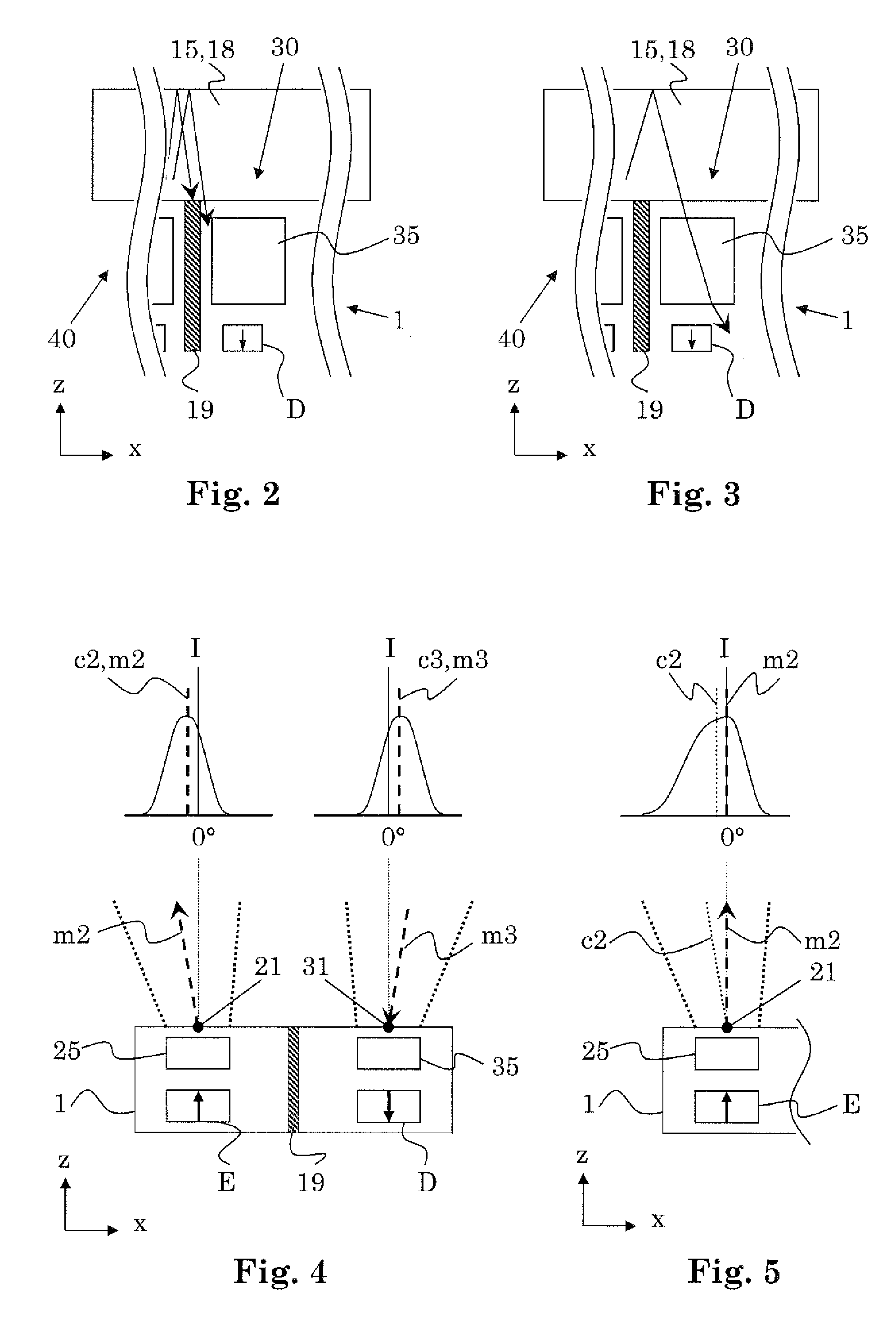Opto-electronic module and devices comprising the same
a technology of optoelectronic modules and optoelectronic modules, applied in the field of optoelectronics, can solve the problems of too large proximity sensors for certain applications, and achieve the effect of convenient (in particular wafer-level) manufacturing, simplified mounting and assembly of optoelectronic modules, and high precision
- Summary
- Abstract
- Description
- Claims
- Application Information
AI Technical Summary
Benefits of technology
Problems solved by technology
Method used
Image
Examples
Embodiment Construction
[0178]FIG. 1 shows a schematic cross-sectional illustration of an opto-electronic module 1, of an electronic circuit 70 comprising said opto-electronic module 1, of an electro-optic arrangement 40 comprising said opto-electronic module 1 and an object 18 and of a device 10 comprising said opto-electronic module 1 as well as said electronic circuit 70 and said electro-optic arrangement 40.
[0179]The device 10 is an electronic device and can in particular be a hand-held device, e.g., a hand-held music-playing device, a portable computing device, a photographic device, a mobile communication device, or others.
[0180]Device 10 comprises a housing 15, and, as illustrated in FIG. 1, it is possible to provide that opto-electronic module 1 is attached directly to housing 15, more specifically to that portion of housing 15 which is formed by object 18. Object 18 is at least partially transparent and is generally plate-shaped, at least on the region in which opto-electronic module 1 is attached...
PUM
 Login to View More
Login to View More Abstract
Description
Claims
Application Information
 Login to View More
Login to View More - R&D
- Intellectual Property
- Life Sciences
- Materials
- Tech Scout
- Unparalleled Data Quality
- Higher Quality Content
- 60% Fewer Hallucinations
Browse by: Latest US Patents, China's latest patents, Technical Efficacy Thesaurus, Application Domain, Technology Topic, Popular Technical Reports.
© 2025 PatSnap. All rights reserved.Legal|Privacy policy|Modern Slavery Act Transparency Statement|Sitemap|About US| Contact US: help@patsnap.com



